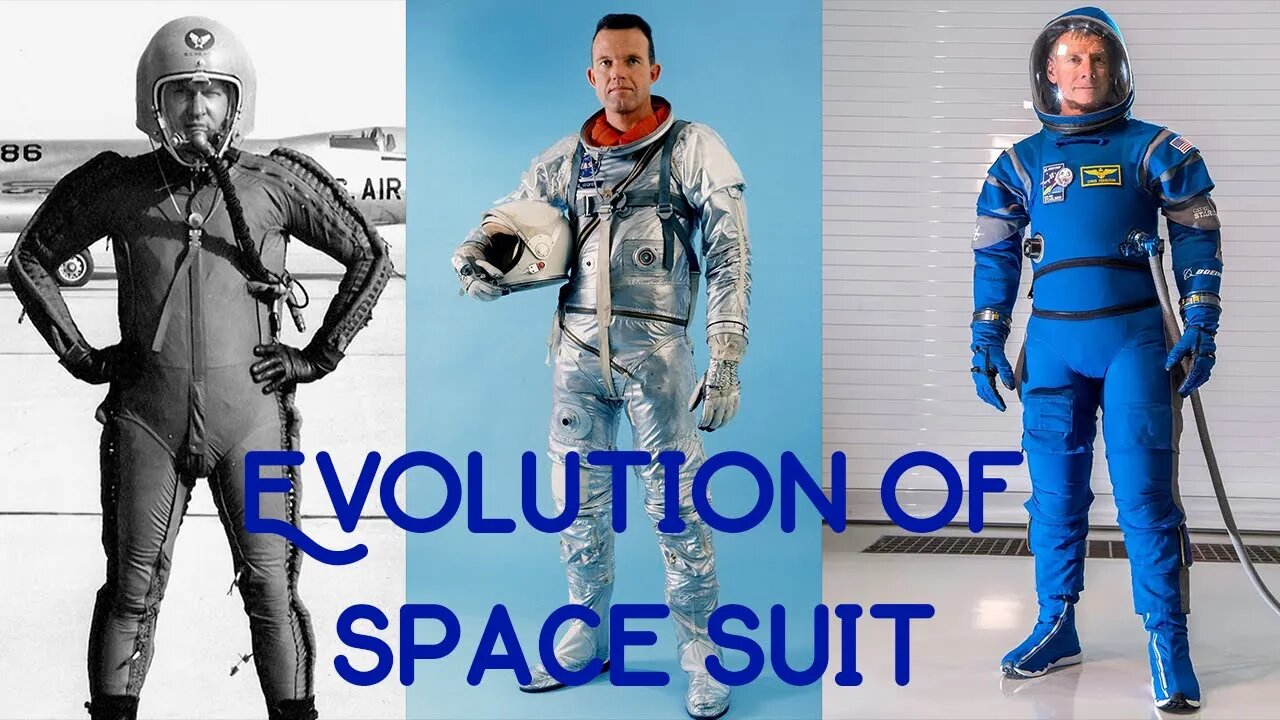Premium Only Content

An Evolution Of Spacesuits: The Suit That Made It Possible For Mankind To Venture Into Space
An Evolution Of Spacesuits
As flight developed, aviators found they had to develop pressure suits to provide oxygen when the air became too thin. The first pressure suit was patented in 1918 by Fred M. Sample. It was made from an elastic material and included an airtight bodysuit, a helmet that could be easily opened and closed, and a flexible air-supply hose connected to a source of compressed air and a pump.
The Suit That Made It Possible For Mankind To Venture Into Space
In 1934, aviator Wiley Post, the first man to fly solo around the world, had rubber manufacturer B.F. Goodrich create a rubber pressure suit that enabled him to reach 40,000 feet (12.1 km). A later version was made from latex poured over cotton clothing and had a metal helmet with a glass visor. Engineer Russell Colley later developed the XH-5 “Tomato Worm Suit” model, which had segmented joints at the knees, hips, and elbows.
Developed by the B.F. Goodrich Company in the late 1950s, the Mercury Suit (also known as the Navy Mark IV) was a modified pressure suit, based on designs used by the United States Navy. The suits were originally designed by Russell Colley for use during the Korean War. NASA's Mercury Project kicked into gear in 1958, and the need for a spacesuit to protect astronauts quickly became apparent.
The Mercury Suit: The first American spacesuit
NASA scientists noted Mark IV as a potential model, given its ability to protect pilots at high altitudes and maintain an atmosphere similar to that of Earth's. To make the design viable for space, they coated the suit with aluminum for thermal control and added a closed-loop breathing system that pumped oxygen into the suit through a tube at the waist.
The Suit That Landed On The Moon
To make the dream of walking on the Moon a reality, NASA had to create a suit that not only kept their astronauts alive in the vacuum of space but would also be lightweight while providing the flexibility and maneuverability needed for walking on the Moon. The design would have to protect its wearer from the effects of radiation, as well as protect the wearer against the tough terrain, and provide the ability to stoop down and collect rocks.
With these concerns in mind, NASA developed what they referred to as EMUs — extravehicular mobility units, which have become colloquially known as the Apollo or Skylab suit.
The suit featured the famous fishbowl helmet and a water-cooled undergarment that was fitted with 300 feet (91 meters) of tubing. An additional "backpack" containing oxygen and cooling water was also worn for walking on the moon's surface.
#spacesuit
#evolutionofspacesuit
# VentureIntoSpace
#nasaspacesuit
#elonmuskspacesuit
-
 LIVE
LIVE
DeVory Darkins
1 hour agoDemocrats are PANICKING over SCOTUS hearing as Young Republicans chat group explodes
13,247 watching -
 LIVE
LIVE
Dr Disrespect
2 hours ago🔴LIVE - DR DISRESPECT - BATTLEFIELD 6 - THE PERFECT WEAPON
1,473 watching -
 LIVE
LIVE
Sean Unpaved
1 hour agoPrime Pulse: Yamamoto's Gem, Mendoza & Simpson's Title Quest, & NFL QB Rule Shift
183 watching -
 LIVE
LIVE
Side Scrollers Podcast
2 hours agoEA BANNING “MAGA” Usernames? + Roblox CP Situation Gets WORSE+ CollarGate + More | Side Scrollers
767 watching -
 1:00:18
1:00:18
Timcast
1 hour agoJD Vance DEFENDS Young Republicans Over Group Chat Leak, Cancel Culture Is OVER
27.3K28 -
 1:59:46
1:59:46
Steven Crowder
3 hours ago251 Racist Slurs: Politico's Bombshell Leak is a Massive Nothingburger
211K197 -
 DVR
DVR
Nikko Ortiz
2 hours agoThis Is Gonna Hurt... | Rumble Live
10.3K -
 35:48
35:48
the_edge_of_show
44 minutes agoExploring the Intersection of Sports, Blockchain & NFTs at Korean Blockchain Week 2025
1.33K -

Benny Johnson
2 hours agoLive Right Now With Democrat Rep. Ro Khanna talking Charlie Kirk, Leftist Violence, Trump Peace Deal
22.6K23 -
 LIVE
LIVE
Viss
3 hours ago🔴LIVE - VissRespect Takes On Battlefield 6 - Best EMR Build!
76 watching